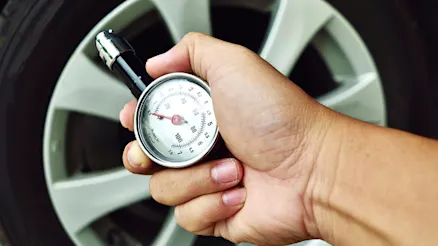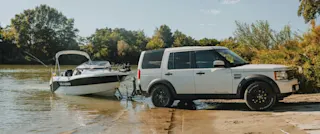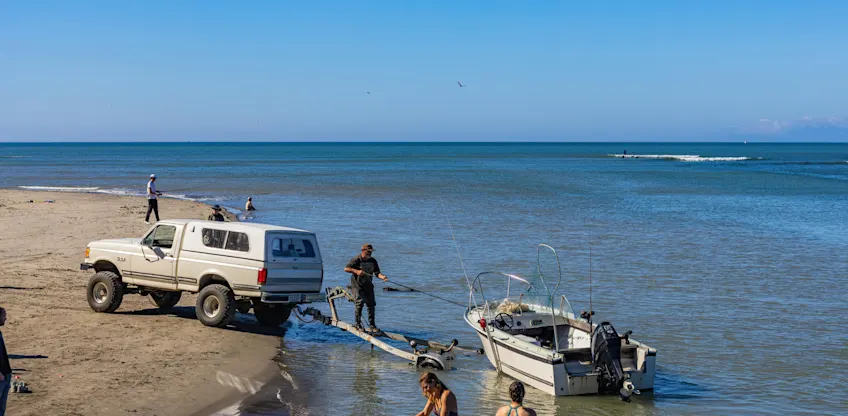
The importance of regularly checking your tyre pressure
Regularly checking your tyre pressure is crucial to your vehicle’s safety, fuel economy and optimal driving.



Regularly checking your tyre pressure is crucial to your vehicle’s safety, fuel economy and optimal driving.

Looking for the perfect gift for the car enthusiast in your life? Carma’s experts have you covered.

Find out which SUVs are best for your next family holiday adventure.
Keen to explore Australia’s iconic coasts waterside? Towing a boat can unlock a whole new way to enjoy Australia’s beautiful waters, from the Great Barrier Reef to secluded coastal spots around the country. However, towing a boat with confidence takes skill and comes with its own unique set of challenges.
Luckily, we’re here to help highlight common mistakes made when boat towing and let you in on the know-how of exactly what not to do when towing a boat, to keep your journey safe, stress-free, and have all your mates marvel at your boat manoeuvring skills, both on and off the water.
As the old saying goes: “failing to plan, is planning to fail,” and this is no different when it comes to skipping your pre-trip checks. Towing a boat adds considerable weight to your car, which impacts both the strain on your car, as well as the overall handling feel. Conducting a thorough inspection of both your trailer and boat to ensure that both are in proper working order before hitting the road, is vital to avoid any nasty surprises mid-trip.
Here’s a list of things to keep an eye on:
You might be a tetris whizz, but cargo weight is just as important as cargo shape. Improper weight distribution can cause your trailer to sway or make it harder to control your car. When loading your boat and gear, distribute the weight so that about 60% is positioned towards the front of the trailer.
Avoid overloading one side, as this imbalance can create serious stability issues. Additionally, check the boat’s position on the trailer. It should sit securely and evenly to prevent shifting, which can lead to dangerous swaying at higher speeds.
Every vehicle has a maximum towing capacity, which can be found in your owner’s manual or specifications. Exceeding this limit can strain your engine, brakes, and transmission, making towing both difficult and dangerous. Before towing a boat, confirm your car has the capacity for the combined weight of the boat, trailer, and any additional equipment.
If you’re not sure, here’s a handy guide on how to calculate your towing capacity. We’ve also got what you need if you’re towing a caravan.
It’s essential to consider your travel route and weather when towing, as Australia’s road conditions can vary widely; from smooth motorways and winding coastal roads to rocky dirt paths. Wet or slippery roads demand a slower, more cautious approach at the best of times, but due to the extra weight towing adds, this is even more vital to ensure your car and trailer remain stable.
Avoid towing at high speeds in windy or rainy conditions, as these can make it much harder to maintain control of your car and can potentially be dangerous. Planning your route in advance can also help you avoid challenging roads and steep hills that may be more difficult to navigate with a trailer.
When towing a boat, it’s important to remember that while your trailer acts as an extension of your car, it is still its own entity and needs to be treated as such. Making abrupt turns or sudden braking can lead to swaying or even jack-knifing, where the trailer swings out sharply to one side.
Plan your movements well in advance, make turns slowly and leave extra distance between you and the car in front to give your trailer time to catch up and move with you. Gradual stopping and smooth lane changes are key to maintaining control and avoiding unnecessary strain on your trailer and car.
Boat trailers are often taller and wider than standard cars, so always keep an eye on height and width restrictions, especially when driving in urban areas. Underpasses, bridges, and even some car parks may have restrictions that can limit your route options. Know your car’s height and width with the trailer attached and avoid routes where space is restricted.
We’ve banged on about it enough now that you’ve likely realised that the main factor in towing challenges is that pesky added weight. Hilly regions will make this all the more true, especially on descents.
If your trailer has brakes, use them on steep downhills to prevent overheating your car’s brakes. Additionally, engage a lower gear to reduce speed naturally, avoiding the need to rely solely on braking. Avoid the temptation to simply let gravity take its course and roll down that hill at breakneck pace.
Reversing a trailer can be tricky if you’re new to towing, as it requires steering in the opposite direction of where you want the trailer to go. Before embarking on a long journey with your boat in tow, take some time to practise reversing in an open area, like an empty parking lot. Familiarising yourself with the trailer’s behaviour will make launching your boat at the ramp much easier and prevent accidents when navigating car parks or tight spaces.
This is how we’d do it:

The moment we’ve all been waiting for, finally launching your boat and getting out on that water! It’s crucial not to rush this step, as doing so incorrectly can lead to serious damage to both the boat and trailer – not to mention cause potential safety hazards at the ramp. You’ll never be invited back to the yacht club with that reputation.
Here’s some tips on perfecting the ‘S’ turn:
Towing a boat can be a fun experience that unlocks a whole new world of exploration. With a bit of careful planning, some extra patience, caution, and respect for the added responsibility on the road, you’ll be a boat-towing pro in no time.
Avoiding these common mistakes will help make your journey safer, less stressful, and more enjoyable for everyone involved, so you can look forward to a hassle-free trip and enjoy Australia’s gorgeous marine landscapes.